Today, many black heroes grace the pages of comics, and some are now making it to the silver screen. But it’s been a long road filled with very small steps and long periods of no movement at all. Here is a chance to see how black comic book characters appeared in comics from the earliest “Pioneer era” through the Golden Age, Atomic Age, Bronze Age, the Modern Age, to the present day. These historical treasures depict black characters from the 1800s to today, spanning virtually the entire history of American comic books.
The Chronological History of Black Characters is a collaboration between the Museum Of UnCut Funk and a private collector on the west coast.
The Silver Age
Our Army at War #113 circa 1961, #160 circa 1965, and #179 circa 1967 D.C. comics’ Black hero of WWII. Sgt. Rock, and his squad #113 debuted an Black soldier. Jackie Johnston, beginning with a variation on the blind gunner/wounded spotter story which had been featured in a popular film. In #160 DC comics does a redux of Marvel’s story from Sgt. Fury 6. Jackie is bedeviled by a soldier who is racist to a level that would seem cartoonish if not for the sad fact that some racists in 1965 were just as bad. He beats Jackie mercilessly wanting to see the color of his blood, which he presumes will be Black. When the soldier later needs a transfusion, he is genuinely shocked to see Jackie’s blood is red, like his. And thus, apparently, begins his journey toward tolerance. Issue #167’s story shows Jackie in a less passive light as he performs heroics to save yet another racist.
Youth in the Ghetto #5 circa 1964 – Youth in the Ghetto appears to have been a periodical report on inner city conditions, and the first four issues may not have been comics at all. Rather, it appears that the report was made in the comic book format for this issue. A lot of statistics are presented here, but presented in very creative ways, with interesting scenarios and sometimes surrealistic artwork.
Sgt. Fury and his Howling Commandos #1 and #2 circa 1963, #6 circa 1964 circa, and #56 circa 1968 – Marvel’s first regular occurring Black character was Gabriel Jones, a jazz musician who is picked to fight in the elite commando squad, headed by Sgt. Nick Fury. The storyline glosses over the fact that, during World War II, Black soldiers were segregated. So unusual was it for Black characters to appear in comics at the time, the printer made Jones appear white on the cover and inside the entire first issue, assuming the color guides were mistaken. Editor/writer Stan Lee has described having to call the colorist and the publisher to make sure they got it right for the second issue. Set includes several issues averaging very fine or better condition. There is a copy of the first issue, in which Jones appears white-skinned, and a copy of the second issue, in which the color error was corrected. Also included are two issues that feature Gabriel Jones in especially memorable stories. In issue #6, the squad is joined by a racist commando who ends up learning to see Gabriel Jones and fellow commando Izzy Israel Jones as people instead of inferiors. The storytelling in this issue is especially effective because every character is depicted as a fully realized person, including the racist sergeant himself — who is, like many real-life racists, paradoxically decent in other ways, even heroic and self-sacrificing in battle. The story showed, in a fairly complex way for any medium of the day, how racism was not limited to people you could easily spot as simple-minded or mean, but that it could be found among people who seemed normal, decent, even heroic. And that made it all the more dangerous and wrong.
Issue #56, in which Gabriel Jones dominates the story and the cover. What makes it unique for its time, and a first, is that it’s a cover story about a black man, but the focus of the story is not about his race, or his being a victim of racism. It’s a love story set during a world war, and the central character, Gabe, just happens to be Black.
Treasure Chest of Fun and Fact V19#11-#20 1963-64 – Ground-breaking and prescient serial that unfolds over ten issues. Published in 1964 in the midst of the struggle for civil rights and the voting rights act, the tale is set in the future – 1976. The hero is a Governor of New York who decides to run for presidential. As we follow his campaign, we see Pettigrew artfully depicted only in shadows or in silhouette. But it never seems like they’re hiding him for any reason except to make it seem like he could be anyone. Only at the end of the story, on the last page, after he wins the nomination, is it revealed the Presidential nominee is a Negro. The story ends with the hope that the school-aged readers will grow up in a world where the election of a Negro president could be possible. This series, published by the Catholic Church, often sought to dispel racist attitudes in its covers and stories. This one is particularly interesting in the way that it starts out the serialized story as if the purpose is solely to educate readers about the political primary process and how it leads to a party nominating someone for President. Pettigrew is a New York governor running for the nomination and encountering many problems along the way, including an assassination attempt and a dirty tricks effort to misrepresent his war record in Vietnam. Some have noted that when Pettigrew finally makes a full appearance, he bears a resemblance to President Barack Obama, who, of course, went on to fulfill the story’s prediction of a Black major party candidate. Conspiracy theorists should bear in mind this was published when President Obama was three years old.
Lobo #1 circa 1965 – A very early comic featuring the words “collector’s issue” on the cover. And some sources, unaware of earlier efforts, cite Lobo as the first black comics hero. The series featured a Black cowboy hero, and for a long time this series was thought to the first featuring a Black hero. Best Comics’ Red Mask and Jungle Action’s Waku appeared much earlier, but those series were, and remain, obscure. This was intended to be an ongoing series, but like other comics featuring Black heroes, this didn’t succeed and vendors reportedly returned bales of copies back to the printer, unopened. It remains a unique and worthwhile effort, the only black western comic book published during the heyday of westerns in movies, TV and comics. One of the many interesting things about this book is that throughout the entire story no one ever mentions the fact that the hero is Black. In a typical story for the time, he was blamed for a crime he didn’t commit and is trying to clear his name. But bad guys keep coming his way.
I Spy Comics #1 and #2 circa 1966 – Comics based on radio shows were popular from the beginning, and TV shows were adapted into comics almost immediately, but this is the first TV comic with a Black star – none other than Bill Cosby, who broke many barriers with the hit TV series and is teamed here on the cover with co-star Robert Culp.
Fantastic Four #52 and #53 circa 1966, 1st Black Panther – When Stan Lee and Jack Kirby created this character for Marvel comics, Lee was unaware of the real Black Panther movement, and he later worried the association would confuse people or hinder the character. It may have, for a time, but the Black Panther remained popular as a guest star into the 1970s, when he was given his own series.
Amazing Spider-man #51 circa 1967, 1st Joe Robertson, #68 circa 1968, 1st Randy Robertson, #78 and # 79 circa 1969, 1st Prowler – The incredibly popular comic was ahead of the curve in featuring a permanent Black character, Joe Robertson, who first appeared without any fanfare, or self-congratulation by Marvel, in issue #51. Issue #68 introduced two Black regular characters as Peter Parker’s college mates. They also appeared on the cover, which marked the first time Black characters appeared on a Spider-man comic as well as the only time a 1960s Marvel comic cover depicted student protests. One of those characters, Randy Robertson, son of Joe Robertson, earned a permanent place in the Spider-man mythology. Issues #78 and #79 feature the origin and debut appearance of The Prowler, a disaffected Black kid who makes himself a super-power suit and then decides heroes are chumps so he may as well become the bad guy and be a winner. Spidey convinces the Prowler to become a hero instead of villain.
Treasure Chest V24#1 circa 1969 – 1st “Deep Six Mystery” team with Black member “Griff”
Secret Six #1-7 circa 1968 – DC’s first to feature a black ‘super team’ member, August Durant.
Captain America #117 and #118 – 1st Falcon circa 1969, #134 Falcon gets co-star billing circa 1971) – Captain America was Marvel’s smash anti-Nazi hero in the 1940s. But, during Cap’s wartime exploits, Black characters were either stereotypes or criminals. That changed in the 1960s, when the patriotic hero acquired his long-time partner (not just a sidekick) who had a way with raptors and called himself. Beginning with issue #134, the Falcon became Cap’s partner and the comic’s title was officially changed to “Captain America and the Falcon.”
Classics Illustrated #169 circa 1969 – The last in the series which began as Classic Comics in 1941, this issue features true-life stories of Black heroes dating back to the revolution.
Superman’s Girlfriend Lois Lane #106 circa 1970 – DC realized it was lagging Marvel comics in relativity and began to make up for it with racially themed stories, well-intentioned but often heavy-handed. In this one, an homage to the book, Black Like Me, Superman helps as Lois Lane transforms into a Black woman so she can report on how it feels to be a minority.
Teen Titans #26 circa 1970 – DC introduces a Black hero, Malcolm Duncan.
Underground Comics – Began to feature parodies of stereotypical Black characters.
Bijou Funnies #3 – 1st – Racist Pig comics circa 1969 – An underground comic satirizing racism.
Captain Guts #2 circa 1970 – In this pornographic parody of superheroes and race relations, Captain Guts fights Black Power. Like many of the undergrounds, the content is extremely rough and not for family audiences.
The Bronze Age
The Silver Age morphed into the Bronze Age of comics – Although people don’t always agree about the year one age ended and the other began. But comics sales began to lag in the early 1970s, and comics began to experiment more. It is here that we see a big increase in black characters in comics.
Ebon #1 circa 1970 – The story opens with a funeral in the ghetto and then follows the inconsolable Valentine Jones, who is soon approached by an alien looking for the man who most resembles the peaceful Africans they encountered on Earth long ago. Valentine is skeptical but the alien proves he is a truly boss dude by espousing an end to all war and bestowing Valentine with super powers.
Spoof #1 – 5 circa 1970 – 1973 – This parody series from Marvel, produced in the vein of their Brand Ecch and Crazy comics. This series was heavy with race-themed parodies of the current trends in Entertainment such as All in the Family, Mod Squad, Julia and the Jackson Five.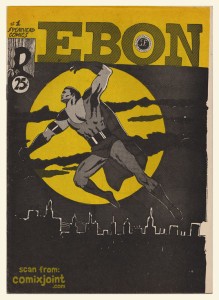
Superman #234 and #239 circa 1971 – The editors of DC comics realized that for more than thirty years they’d been showing readers glimpses of Superman’s home planet Krypton but that not a single Black person was ever seen. Since Kryptonians were described as a race of highly advanced people, that presented a problem of perception. The solution they came up with was well-intentioned but, at first, it only made things worse. They decided to explain the lack of Black people by saying that all Black Kryptonians lived on their own, separate from the white Kryptonians.
Green Arrow #87 circa 1971, 1st John Stewart – Black hero who takes Hal Hordan’s place. This, along with Spider-man #68, is one of those most cited in historical references to black characters and “relevance” in comics.
New Gods #3 circa 1971 – 1st Black Racer – D.C.Comics first Black superhero and second Black character after Jackie Johnson in Sgt. Rock comics. The Black Racer was created by Jack Kirby, who had co-created the first enduring Black hero with Marvel’s Black Panther, five years earlier.
Creepy #43 circa 1972 – Thought to contain the first interracial kiss in comics. In the early 70s, began to feature Blacks as secondary characters. Some of the examples included are: Girls’ Love #159 and Young Romance #174 circa 1971 which featured an advice column called Do’s and Don’ts of Dating by a young Black girl named Page Peterson.
Hero for Hire #1 circa 1972 – Luke Cage – makes the grade as the first Black Marvel hero to get his own title. Still a popular character today, it’s interesting to see Cage in his original 70s environs, complete with bellbottom jeans, platform shoes and afros.
Super Soul Comix #1 circa 1972 – Underground comic done in the vein of the exploiting the Blaxploitation era.
Marvel Team-up #1 circa 1972 – 1st Misty Knight – Although Misty’s first official appearance was several years later, comic historians agree that she is the same woman who appears here at a pivotal point in this story. Saved from a mugging by Spiderman, she implores Spidey to let them go because …it’s Christmas Eve. Some might call this a “prototype” appearance, but it’s understood that Marvel had such good response to her guest appearance in this issue that they decided to bring her back, expand her story and her level of badassery, to make her a hero detective.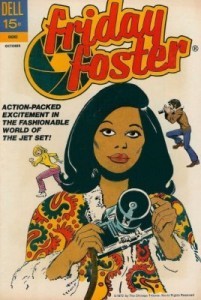
Friday Foster #1 circa 1972 – Friday is an Black female crime fighting photographer. Friday was popular enough in her day to star in a comic book, a newspaper strip, and a movie starring Pam Grier.
Black Laughter circa 1972 – One-shot attempt at a Black-themed comic book, with jokes of a mostly domestic nature. The jokes themselves are not racist at all but they dated.
Harlem Globetrotters #1 circa 1972 – Comic book featuring the famous basketball team in adventures aimed at young kids.
Soul Love Comics by Jack Kirby, unpublished, circa 1973 – Few people know that Kirby, co-creator of many of Marvel’s characters, including his Black panther, also was co-creator of the Romance comic genre. In 1973 Kirby made this noble attempt at transcending the Blaxploitation comics and failed. The legendary Jack Kirby, who had virtually co-created the earlier romance comic boom, this effort never saw the light of a newsstand.
Wonder Woman #204 – #206 circa 1973 – Introduction of Nu’Bia, Black Amazonian with powers like Wonder Woman.
Tomb of Dracula #10 circa 1973 – Contains the first appearance of Blade, the Black vampire later portrayed by Wesley Snipes in what many forget was Marvel’s first cinematic hit film series.
Strange Tales #169, 1st Dr. Voodoo, 1973 – Marvel’s Black heroes of the early 70s sometimes mirrored the blaxploitation films of the day. In this case, Dr. Voodo is an anti-hero who is literally and figuratively a black magician.
Astonishing Tales #25 circa 1974, 1st Deathlok – Detroit cop sent from the future as a cyborg, in a tales that preceded Terminator.
Gunhawks #1-#7 circa 1972- 1973 – Cited as Marvel’s third Black star after Luke Cage and the Black Panther, Reno Jones actually co-starred with his white partner, Kid Cassidy in this series that borrowed heavily from a blend of 60s Westerns Butch Cassidy, Django and early 70s Blaxploitation films.
Avengers #112 circa 1973 – T’Challa, the Black Panther, is beset by angry people who believe he has sold out to the white establishment by becoming an Avenger and demand he go back to Africa.
Jungle Action #6-#24 circa 1973 – 1976 – Marvel’s Black Panther became the star of this jungle-themed comic, much as Prince Waku had co-starred in Marvel’s short-lived 1954 series of the same name. The acclaimed “Panther’s Rage” story was created and told as a multi-part, closed-end story, much more like a comic novella than a series, it is considered by some critics as a precursor to the graphic novel. This series also contains a story pitting the Panther against the Klan, story crosses over into Marvel Premiere #51-53.
Amazing Adventures #31 circa 1975 – Considered the first interracial kiss in mainstream comics.
Amazing Spider-Man #140 circa 1st Glory Grant, 1975 – Glory Grant, is a Black supporting character of Spider-Man. She is a neighbor of Peter Parker. Peter then helps her secure a position as J. Jonah Jameson’s secretary at the Daily Bugle,
Tom Skinner, Up From Harlem #1 circa 1975 – An inspirational comic that took a much less condescending approach than its forerunner, 1944’s “Shoogafoots Jones.” This comic seeks to inspire kids to avoid gangs and seek out God. It features plenty of time-warp dialogue, afro cuts, bell-bottoms and leisure suits.
Marvel Premiere #20 circa 1975 – 1st official appearance of Misty Knight.
Giant-Size X-Men #1 – 1st appearance of Storm along with the new X-Men, circa 1975 – Marvel’s most popular title was actually failing in 1975, with the comics relegated to reprints of the original series stories from the 60s. The comic franchise was reborn with the introduction of several new X-Men, including Wolverine and Storm, the team’s first Black member. She became an integral part of the X-Men mythology of the comics and the films, where she was played by Academy Award winner Halle Berry.
Power Man #24 circa 1975 – 1st Black Goliath. Dr. Bill Foster, aka Black Goliath, the second Giant-Man and the fourth Goliath, is a superhero appearing in Marvel Comics.
Golden Legacy Comics, circa 1976 – The “Golden Legacy” comics series featured true stories of Black heroes and legends from all throughout history.
Teen Titans #45 circa 1977 – 1st Bumblebee – The first Black female hero in DC comics, Bumblebee , who started out as the girlfriend of the team’s black hero, Mal Duncan.
Fast Willie Jackson #1-#7 circa 1976 – Published by Fitzgerald Periodicals. It is essentially Archie done with a Black cast of characters, and drawn in a style similar to Dan Decarlo’s. The cast of characters include Jabar, Dee Dee Wilson, Jo-Jo, Hannibal, and Frankie Johnson, along with Fast Willie Jackson himself.
Superboy #216 circa 1976 – 1st appearance of Tyroc – The anti-hero Tyroc aka the Black Bomber, was a radical who initially opposed Superboy and the Legion of Heroes.
Marvel Team-up #64 circa 1977 – The 1st interracial kiss, this is thought to be the first time that a Black and white superhero couple does a lip-lock, with Iron Fist and Misty Knight doing the snogging.
Black Lightning #1 circa 1977 – DC finally made a concerted effort to make a Black superhero market with Black Lightning.
Black Panther #1 – #15 circa 1977 – 1979 – Marvel’s African prince gets his own self-titled series.
Superman vs. Muhammad Ali circa 1978 – Superman in the ring against the world heavyweight champion of the world Muhammad Ali.
Iron Man #118 circa 1979 – 1st appearance of James Rhodey Rhodes aka War Machine – Rhodey is a friend of Iron Man/Tony Stark, who later takes over as Iron Man, after Stark’s alcoholism makes him unfit for duty. Rhodey becomes “war machine” in the comics and is a major character in the Iron Man film series.
For More Information:

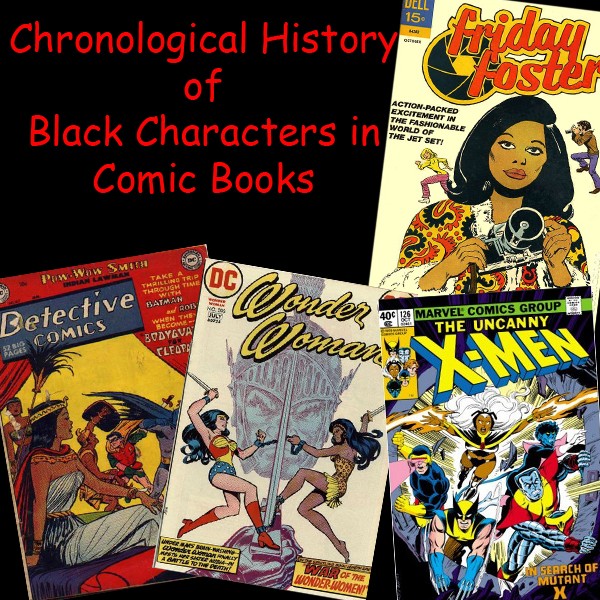

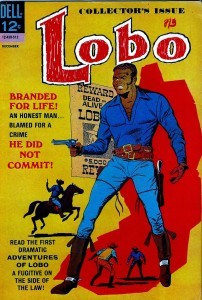
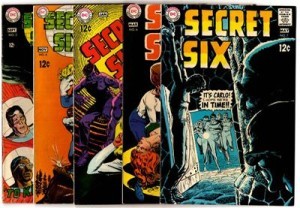
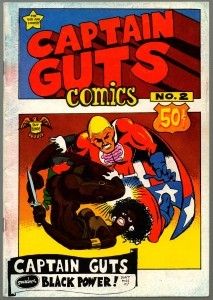
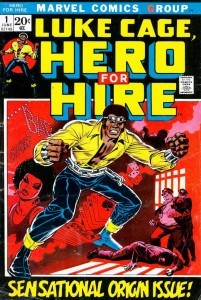
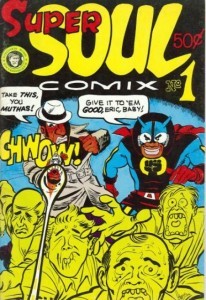
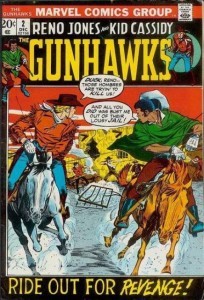
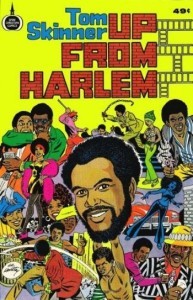
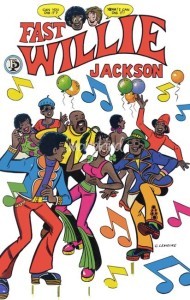
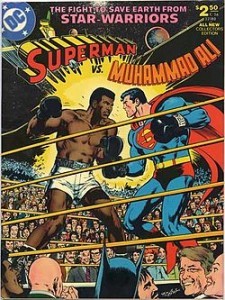
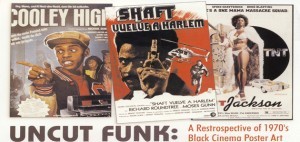

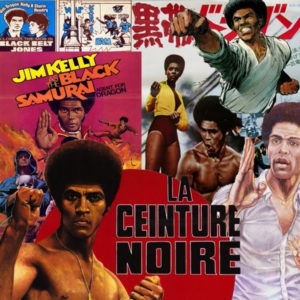

4 Comments
I didn´t know that stuff about Kirby! Thanks for the info!
Doesn’t include the underground one-shot Superbitch
Excellent article, very well researched. You did omit one series that I can think of. It was LIL KIDS featuring CALVIN. It was published by Marvel in 1973 and it ran for three issues, #’s 10, 11 and 12. It featured new stories and art and probably the first black comic for the Archie age group.
An interesting article, but the original Deathlok was a white guy, so Astonishing Tales #25 isn’t an example of a black character starring in a comic.